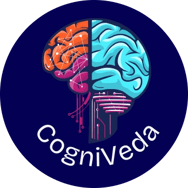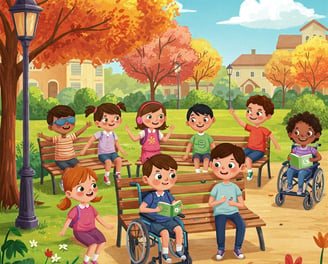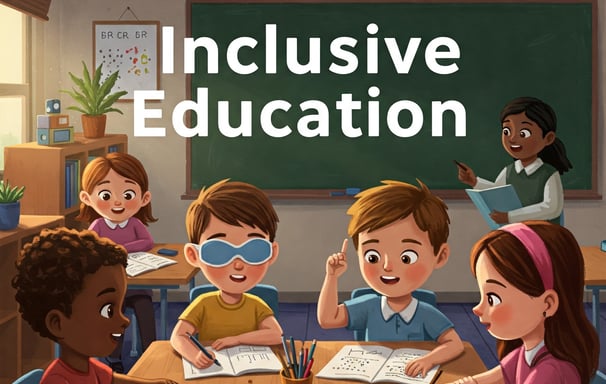Study Material for Kids and Parents
Guidelines for Creating Inclusive Upper Primary Classrooms
The content includes discussions on Visual Impairment, Hearing Impairment, Physical Disabilities, and Cognitive and Intellectual Disabilities, providing insights into the nature and educational needs of students with these challenges. It also covers Continuous Comprehensive Evaluation in an Inclusive Setting, which is essential for monitoring the progress of all learners, and a chapter titled Some Concerns Voiced by Teachers, reflecting practical experiences from the field. Additional sections include References and two annexures listing Workshop Participants and Braille Presses in India. This is taken from NCERT. Click on the image to access the link.
Understanding Disabilities and Inclusive Educational Practices
The book begins with a general Introduction, followed by a detailed section on “Creating Effective Inclusive Upper Primary Classrooms,” which addresses various categories of disabilities including sensory disabilities (visual and hearing impairments), cognitive and intellectual disabilities, and physical disabilities. The third chapter focuses on “Continuous and Comprehensive Evaluation in Inclusive Classrooms,” emphasizing assessment strategies suited to inclusive settings. Additionally, it includes References and Annexure I, listing workshop participants. This is taken from NCERT. Click on the image to access the link.
Implementing the RTE Act: Rights and Responsibilities
It starts with introductory sections including the Foreword, Preface, About the Book, and a List of Abbreviations. The chapters cover crucial topics such as Understanding the RTE Act, Specific Rights of Children, and the Duties of Key Personnel. Further chapters delve into the role of parents (Involving Parents), promoting inclusivity (Schools for All), teacher support (Empowering Teachers), ensuring learning access (Access to Curriculum), and safeguarding child rights (Protection of the Rights of Children). The appendix includes RTE Rules, Guidelines and Notifications, as well as a section on Important References. This is taken from NCERT. Click on the image to access the link.






